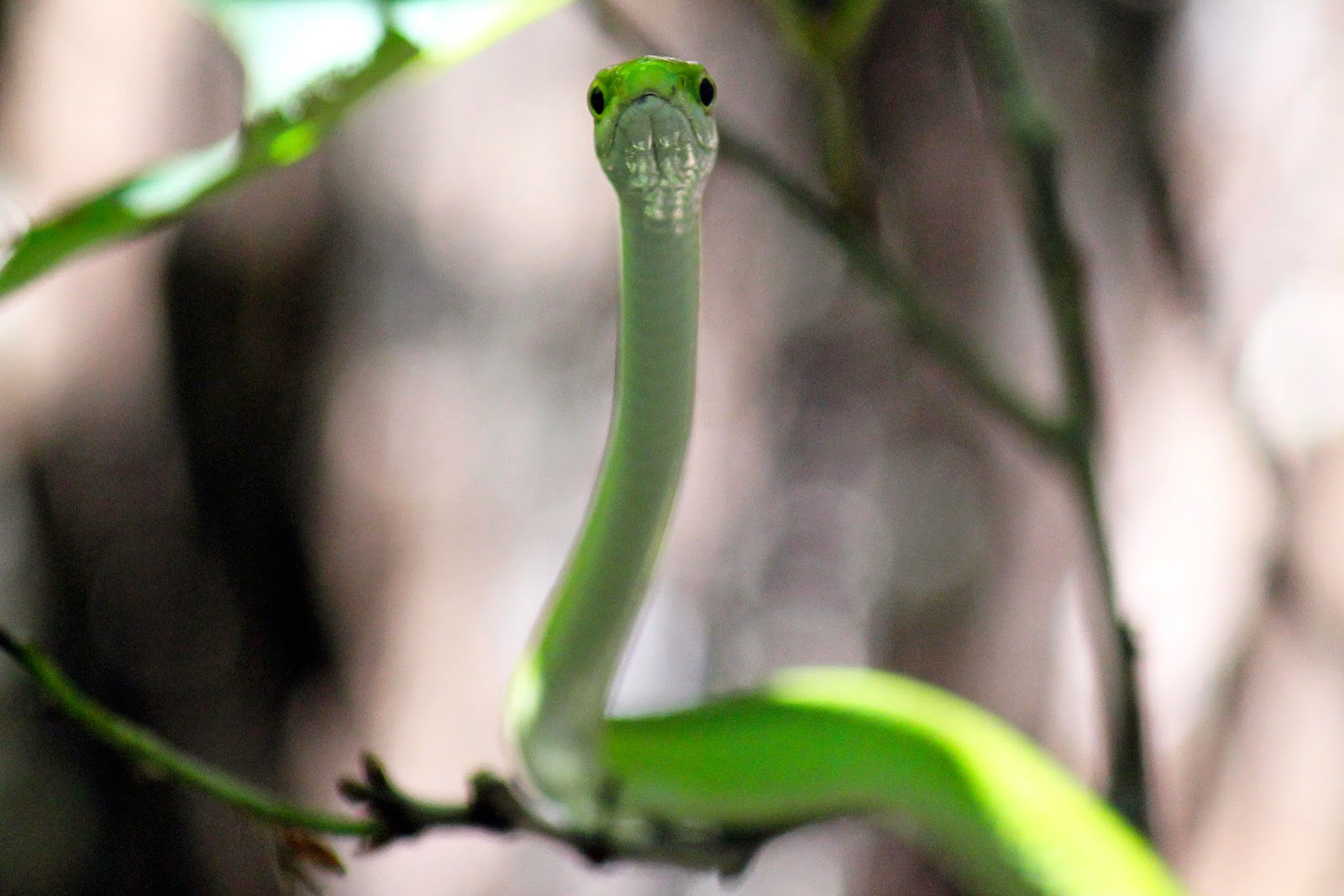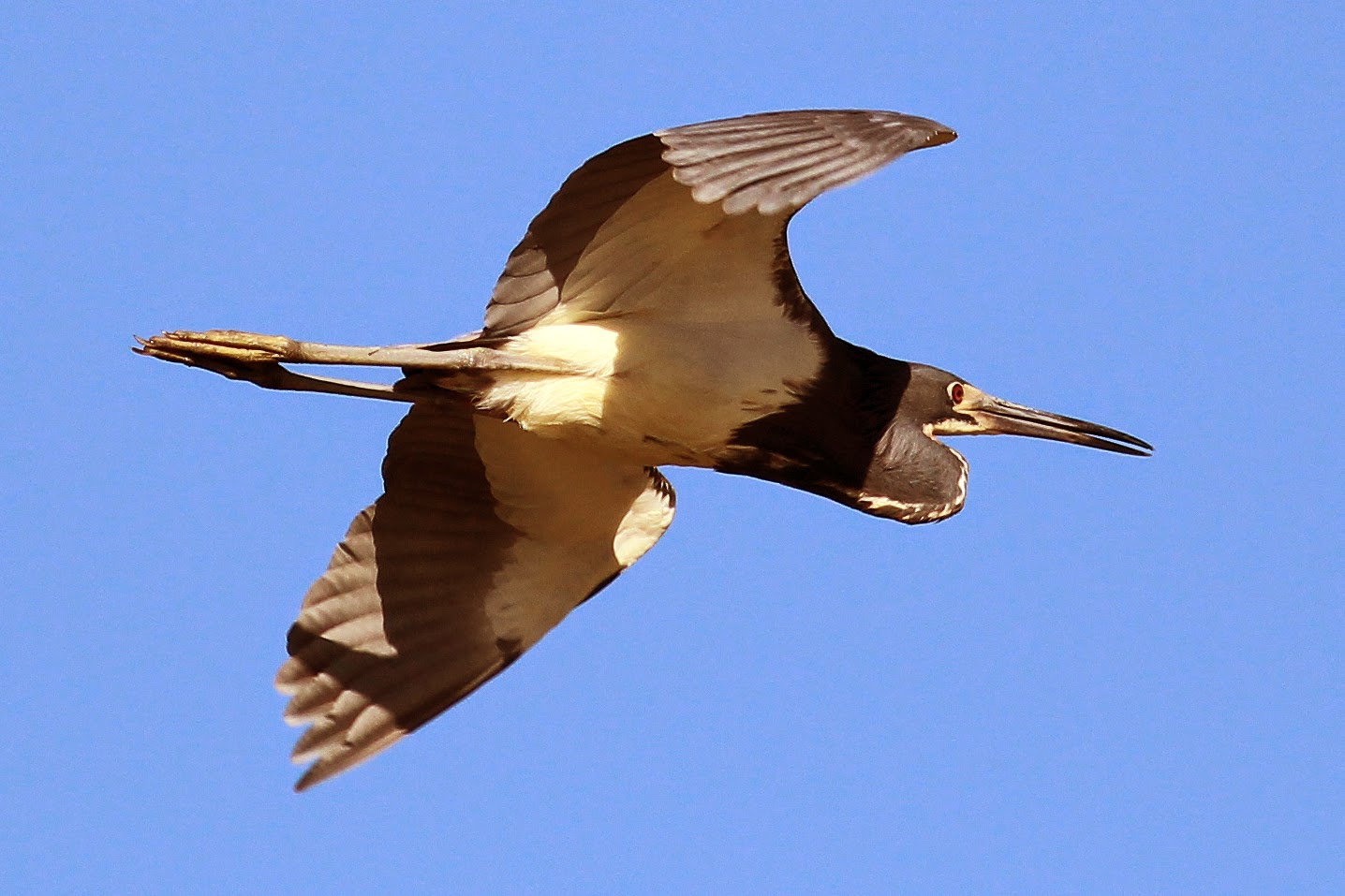| Image may be NSFW. Clik here to view.  |
| Sabal minor palms growing on the floor detritus of the Great Trinity Forest, Dallas Texas, June 7, 2014 |
| Image may be NSFW. Clik here to view. 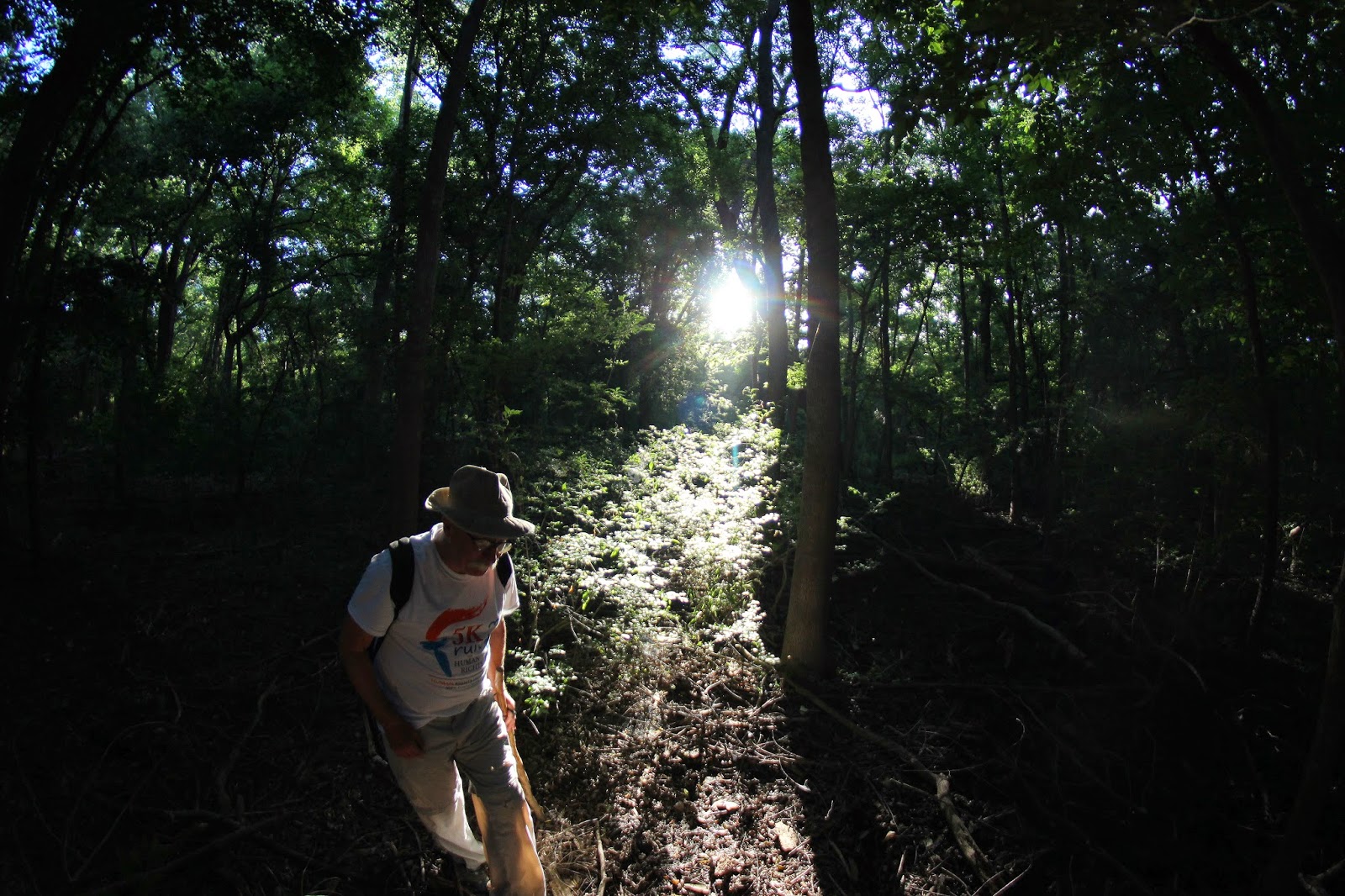 |
| Master Naturalist Bill Holston moving through a shaft of early morning light in the otherwise dense and dark forest |
| Image may be NSFW. Clik here to view.  |
| Flash required to highlight the flowering stems of the palm |
Dark. Even on the brightest of June mornings. The sun's rays strain to reach under the double dappled canopies of mature pecans, walnuts and oaks. The exceptional experience is one that would one would think to be found afar from Dallas. Maybe Big Thicket or swamps on the Sabine hold such caliginous and musky spots. No. It exists inside the city limits. Fitting that such a place holds the most biodiversity in the Great Trinity Forest. One of the more unique species found here, an outlier species that defies the status quo is the Sabal minor palm.
The Sabal minor, the Dwarf Palmetto, is an understory palm generally occurring in low-lying, swampy habitats. Sabal minor occurs from Southeastern Oklahoma and Texas eastward to Florida and North Carolina. It is a wetland species that thrives in swamps, floodplains and backwater regions of the southeast where the land is often inundated by prolonged periods of water.
| Image may be NSFW. Clik here to view.  |
| Budding flowers on a Sabal minor, Great Trinity Forest, Dallas Texas, June 7, 2014 |
| Image may be NSFW. Clik here to view.  |
| Sean Fitzgerald works through the bright sun and very dark shadows which is uncommon in North Central Texas |
Sabal Arecaceae constitutes sixteen species of palms that are distributed in the eastern woodlands and coastal plains of the Southeastern United States. Spanish explorers who landed on what is now the Gulf coasts of the United States immediately noticed the “palmito” or little palms growing everywhere. The “palmetto” name has since been applied in common names to these small palms.
Sabal minor dwarf palmetto or swamp palmetto has a solitary subterranean(underground) stem and rarely seen above ground in North Texas with 4–10 dark green leaves. It is thought that the trunks are subsurface to aid in protection from freezing cold weather and frozen conditions. Hardier than many palms, these plants have endured countless cold snaps and ice storms that few of their southern counterparts will ever experience. These plants made it through some of the coldest winter weather conditions that North Texas has experienced in many years. The cold weather of December 2013 sent temperatures in Dallas into the near single digits for days. Cold hardy and the ability to thrive in extremes make the plants here a special and unique colony.
| Image may be NSFW. Clik here to view.  |
| Biologist Scott Hudson and Photographer Sean Fitzgerald checking out feral hog damage in an ephemeral section of swamp, dried after recent rains in May |
| Image may be NSFW. Clik here to view.  |
| A mushroom growing up through a decayed pecan limb on the forest floor |
| Image may be NSFW. Clik here to view.  |
| Honeybee hive in a Bois d' Arc tree |
A number of larger trees here have voids in them. Seen at left, a large honey bee colony has built a hive about 8 feet up in a cavity of a Bois d' Arc tree. Many Bois 'd Arc trees exist in this area. Tough and resistant to nearly all diseases, they can live centuries in the riverbottoms under ideal conditions. These trees prefer a slightly higher elevation just out of the immediate floodplain on slightly drier ground.
| Image may be NSFW. Clik here to view.  |
| Red bellied woodpecker in a cedar elm |
The Red-bellied Woodpecker is a familiar year round resident of forests in the eastern half the United States It is a bird of densely wooded lowlands and bottomlands, open forests and swamps. It too uses the voids and cavities of trees. The bee hive and the woodpecker seen in the photos here were taken within 100 feet of one another.
Engaging the formal swamp
| Image may be NSFW. Clik here to view.  |
| Acres and acres of snake filled swamp that we slogged though |
| Image may be NSFW. Clik here to view.  |
| Ankle deep water in the flooded sedge, acres of it |
Lots of over banking events this spring have created ideal aquatic habitat and food for wading birds, snakes and frogs. Getting there requires wading through flooded aquatic grasses that are prime habitat for water moccasins and alligators. Called sedge, this aquatic grass in the lifeblood of environments like this.
| Image may be NSFW. Clik here to view.  |
| Black Crowned Night Heron in a pocket pool surrounded by sedge |
In Texas, there are over 100 species of sedges and they are difficult to identify without using detailed botanical indexes. In general, sedges are perennial plants that resemble grass, grow in shallow water or damp soils, and can reach 3-4 feet in height. Sedges often grow in thick clusters called tussocks.
Submerged portions of all aquatic plants provide habitats for many micro and macro invertebrates. These invertebrates in turn are used as food by fish and other wildlife species (e.g. amphibians, reptiles, ducks, etc.). After aquatic plants die, their decomposition by bacteria and fungi provides food for many aquatic invertebrates. Sedges are considered good wildlife plants. Sedges are grazed by muskrats, nutria, and rabbits, while the seeds are consumed by waterfowl and small birds.
| Image may be NSFW. Clik here to view.  |
| Panorama of open water, Great Trinity Forest |
| Image may be NSFW. Clik here to view.  |
| A first look at a promising site for dispersal birds later in the summer. Left to right, Sean Fitzgerald, Bill Holston, Scott Hudson. Scott with the field glasses is observing a Yellow Crowned Night Heron on the opposing shore |
| Image may be NSFW. Clik here to view.  |
| Tri-colored Heron with a sunfish |
| Image may be NSFW. Clik here to view.  |
| Great Egret in breeding plumage, note the neon green around the nose |
| Image may be NSFW. Clik here to view.  |
| Checking out the water depth and making mental field notes |
| Image may be NSFW. Clik here to view.  |
| Yellow Crowned Night Heron |
| Image may be NSFW. Clik here to view.  |
| Rough Green Snake in an Oak |
Some Birds Of The Swamp
| Image may be NSFW. Clik here to view. 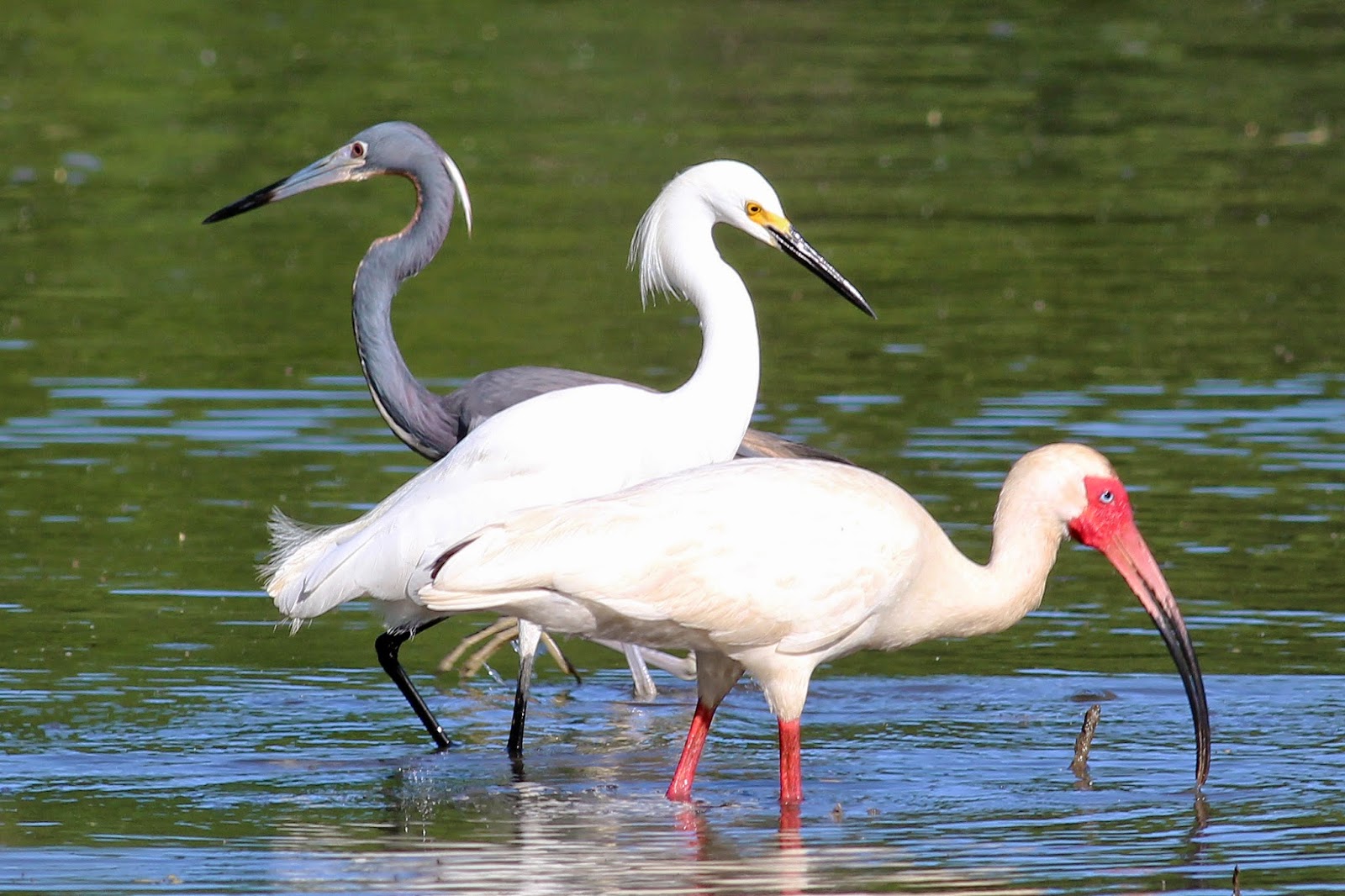 |
| Tri-colored Heron, Snowy Egret and White Ibis, Great Trinity Forest, June 7, 2014 |
Clik here to view.
 Three birds featured above, all wading birds of near similar size and height with all very different methods of catching prey.
Three birds featured above, all wading birds of near similar size and height with all very different methods of catching prey. Perhaps a decade ago, the sight of a White Ibis was a rare occurrence in Dallas. Same with the Tri-Colored Herons who, even today still exist on ornithological range maps as birds of the Gulf estuaries and Louisiana swamps.
| Image may be NSFW. Clik here to view.  |
| White Ibis foraging for food |
| Image may be NSFW. Clik here to view.  |
| Snowy Egret |
| Image may be NSFW. Clik here to view.  |
| Snowy Egret prowling for prey |
| Image may be NSFW. Clik here to view.  |
| Juvenile Little Blue Heron |
| Image may be NSFW. Clik here to view. 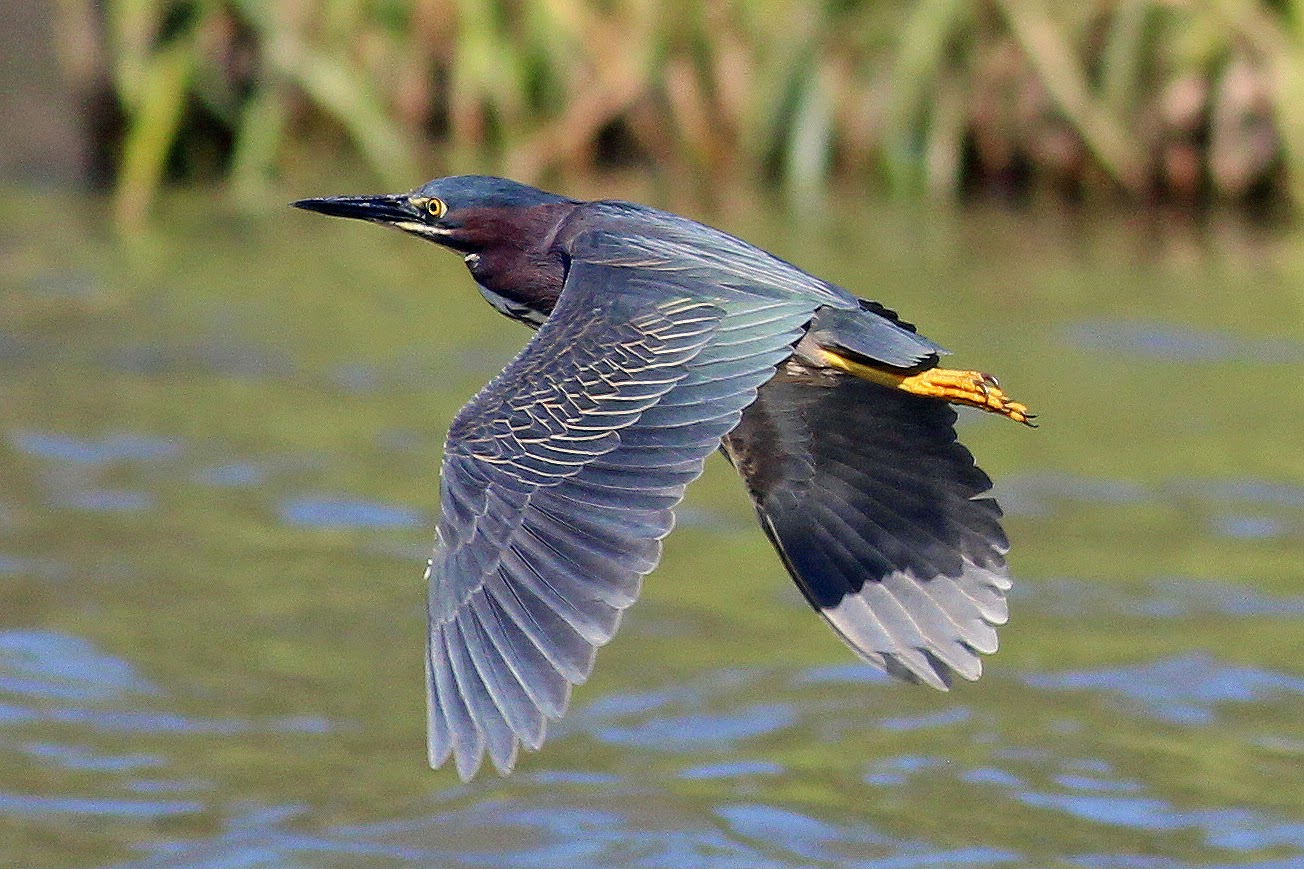 |
| Green Heron |
| Image may be NSFW. Clik here to view.  |
| Yellow Crowned Night Heron |
The Yellow-Crowned Night Heron is a migratory bird that resides here along the Trinity River in Texas Unlike other night heron species, the yellow-crowned forages both late in the day and night. It forages much like other herons by wading through water waiting for its prey to come within striking distance. Also, unlike the great heron which many have seen standing motionless like a statue in many Texas waters, the yellow-crowned will stir up its quarry by wading briskly at the waters edge. With a quick dancing motion, the dagger like bill stabs its prey. The prey of a Yellow-Crowned Night Heron normally consists of fish, frogs, grasshoppers, and occasionally snakes, but its primary diet is crustaceans.
| Image may be NSFW. Clik here to view.  |
| Juvenile Yellow Crowned Night Heron on the branch of a willow |
| Image may be NSFW. Clik here to view.  |
| Tri-colored Heron |
It is the only dark colored bird with a white underbelly in the heron family. The Tri-colored Heron usually measures a little over two feet in length and has a little over three foot wingspan.
| Image may be NSFW. Clik here to view.  |
| White Ibis |
Because they require shallow water for feeding, many white ibises are found in coastal, aquatic environments such as ponds and lakes or inland wetlands. White Ibises are primarily found in southern coastal regions of the Gulf states and during the summer and move inland after the breeding and nesting seasons. Called "dispersal", the wading birds head inland from the coast in search of slowly drying ponds and beds. Because water depth is of the upmost importance for their feeding and reproductive behaviors, White Ibises may shift locations due to the rise and fall of water levels.
| Image may be NSFW. Clik here to view.  |
| White Ibis in the Great Trinity Forest June 7, 2014 |

